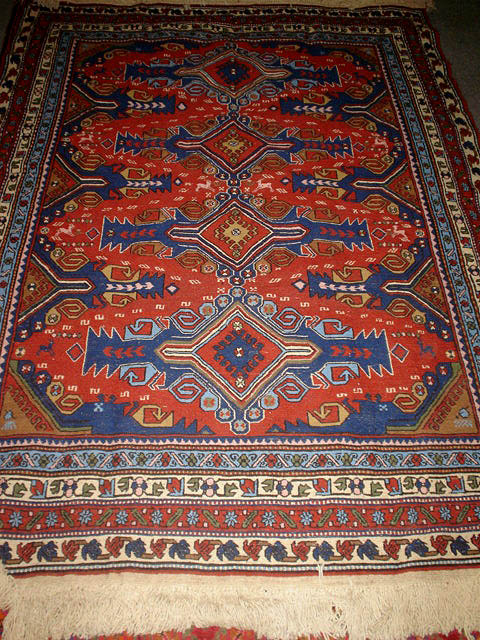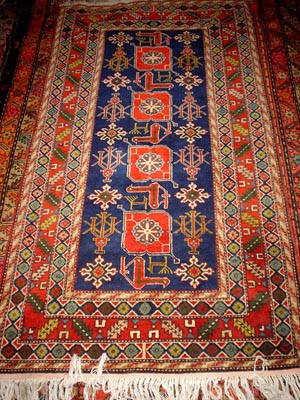 |
Group: Kuba Sub-Group: Kuba Sumak Country: Azerbaijan Weaving Type: Sumakh Material: pure wool Supplementary yarns: wool Size: 173cmx235cm Size (ft): 5'7"x7'7" Age: new
Price: $690
|
 |
Group: Kuba
Price: $690
|
 |
Price: $850
|
 |
Group: Kuba Sub-Group: Konagkend Country: Azerbaijan Pile: wool Warps: cotton Wefts: cotton Size: 135cmx200cm Size (ft): 4'5"x6'6" Age: 1970's Description: The central field is dominated by two large medallions, very similar to those found on traditional Caucasian Kuba Sumak rugs. This medallion is the geometric form of Turunj medallion, which has been used in the decoration of Islamic books, architectural buildings and engravings of the gravestones since 9th century. From the 12th century this design was used in carpets. According to Kerimov, the cross shaped element which is located in the centre of the medallion is the geometric shape of a flower with four petals. There is a second opinion about the origin of Konagkend design. it is well known fact that this region has been carpet weaving district for centuries. In the 7th century, historian Musa Kalankatli noted in "Agvan tarikhi", that silk textiles and multicoloured carpets were manufactured in Albania -the ancient state which was existed from 4th century BC until 7th century AD, for 1100 years in the territory of Northern Azerbaijan. Price: $1290
|